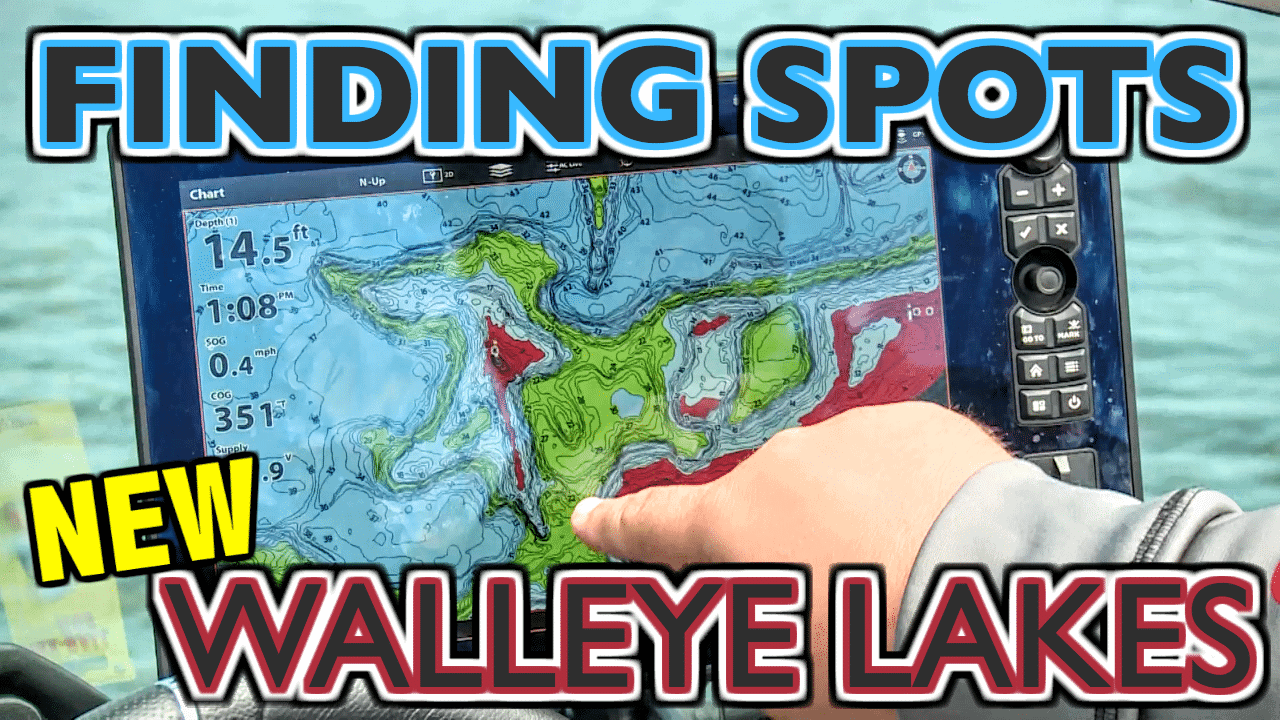Finding walleyes on new lakes can be a challenging feat when you can’t rely on experience and your favorite hotspots. Joel Nelson is always exploring new lakes looking for the next hot bite, and in this video, he breaks down exactly how he would dissect three different lakes he’s never fished before. Hopefully, you’ll find a few helpful tips!
In this article, we will explore the process of finding walleyes on new lakes through map study. Many anglers often wonder where to fish on a new lake, especially if they have never been there before. By diving into the details of mapping and understanding specific conditions, we can create a milk run of spots to fish. Let’s explore this process together.
Choosing a Lake
To begin, let’s zoom in on a random lake in north-central Minnesota. This region is known for its abundance of great lakes, some of which I have fished before and others that are new to me. For the purpose of this article, let’s pick a lake and analyze its mapping to determine potential walleye fishing spots.
Analyzing the Map
When analyzing a new lake, it’s important to consider the specific conditions that walleyes prefer. In the summertime, walleyes are often found in offshore areas that are wind-driven. If it were earlier in the season, shoreline structure and main shoreline points would be worth exploring. However, for summertime walleye fishing, we want to focus on areas that receive good prevailing northwest winds.
Based on the map, we can identify some potential spots for walleye fishing. There are offshore structures, reefs, and a public access point on the north end of the lake. These are all promising indicators that the lake may hold walleyes.
West-Facing Reefs
One of the best spots to target walleyes in the summertime on unfamiliar lakes is west-facing reefs. These areas often receive good prevailing northwest winds, which can concentrate fish. Along with the main lake point and other reefs, these west-facing reefs should be a priority when planning a fishing trip on a new lake.
Concentrated Fish Movement
Another important factor to consider when looking for walleyes is areas that concentrate fish movement. In the summer, fish tend to hang out deep and move up to the shallows to feed. Inside turns and saddle areas between reefs and islands are often great places to find concentrated fish activity. Whether you’re using Lindy rigs, live bait rigging, spinners, or jigging, these areas should be your first focus.
Adapting to On-Site Information
While pre-planning and map study are essential, it’s important to trust your on-site electronics and adapt your approach based on the day’s conditions. Variables such as bug hatches, time of day, depth, and water clarity can all impact the bite. Use your pre-planning tools to create a milk run of spots, but rely on the on-site information to fine-tune your approach.
Exploring Different Lake Types
Now that we’ve covered a North Country lake, let’s explore a lake in the agricultural region. These lakes may have different characteristics and require a different approach. For example, a bowl-shaped lake may not have as many options for offshore structure. In this case , we need to focus on less obvious spots. Look for slow sloping brake lines, inside turns, and larger, less abrupt structures. These spots may hold walleyes that are not as heavily targeted by other anglers.
Shallow shoreline breaks can also be productive in lakes with limited offshore structure. Focus on areas where the shoreline steepens into deeper water and try using shad wraps or crankbaits, especially at night.
Tackling Large Lakes
Fishing a large lake that you’ve never been to before can be a daunting task. In these situations, it’s best to pick a large structural element that is well-known and frequently fished by local anglers. Break down this piece of structure bit by bit to understand its potential.
For walleyes, wind is always a crucial factor. Look for shallow rock spines or areas where wind is pushing up against shallow rocks. These areas can create a funnel for walleyes to move up from the depths and provide excellent crankbait fishing opportunities.
Inside turns on large structures can also be productive, especially when wind is pushing baitfish into these pockets. Additionally, points are always worth checking for the presence of fish.
By starting with a large piece of structure and gradually expanding your search, you can learn a lot about the lake and potentially apply that knowledge to other areas.
Conclusion
Finding walleyes on new lakes can be challenging, but with careful map study and understanding of specific conditions, you can create a milk run of spots to fish. Whether you’re targeting west-facing reefs, concentrated fish movement areas, or less obvious spots, it’s important to adapt your approach based on on-site information. And when tackling large lakes, start with a well-known structural element and break it down to uncover potential hotspots.
Remember, fishing is all about exploration and learning. So don’t be afraid to try new lakes and experiment with different techniques. Happy fishing!










